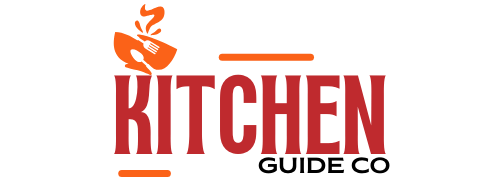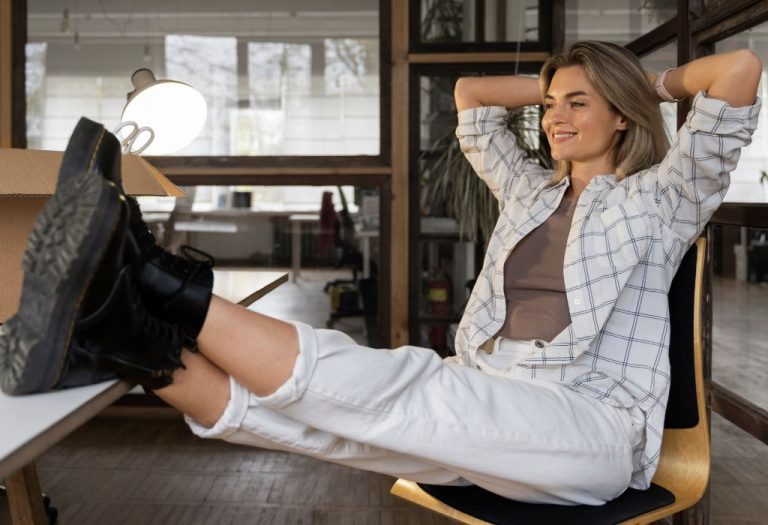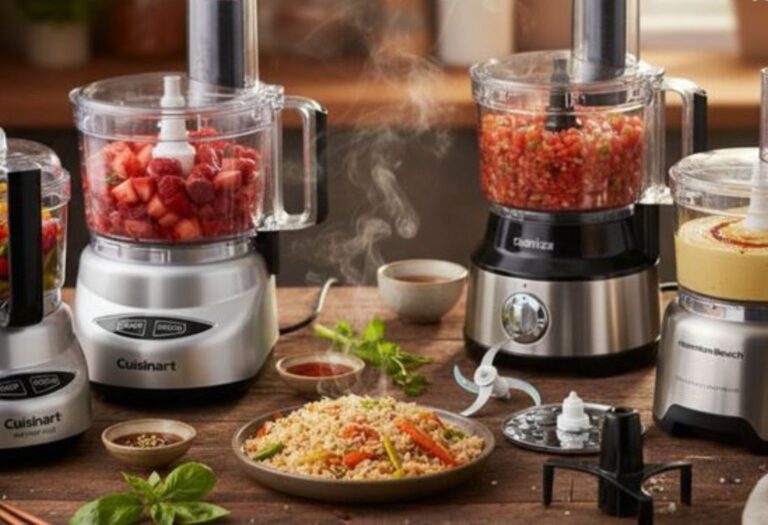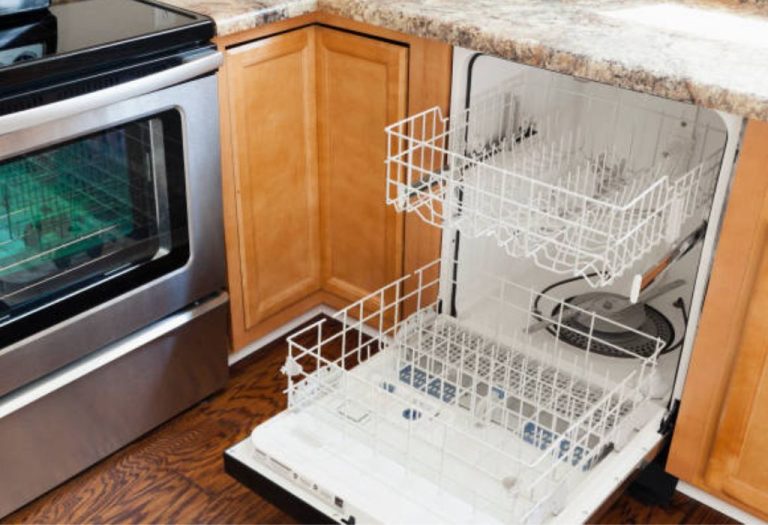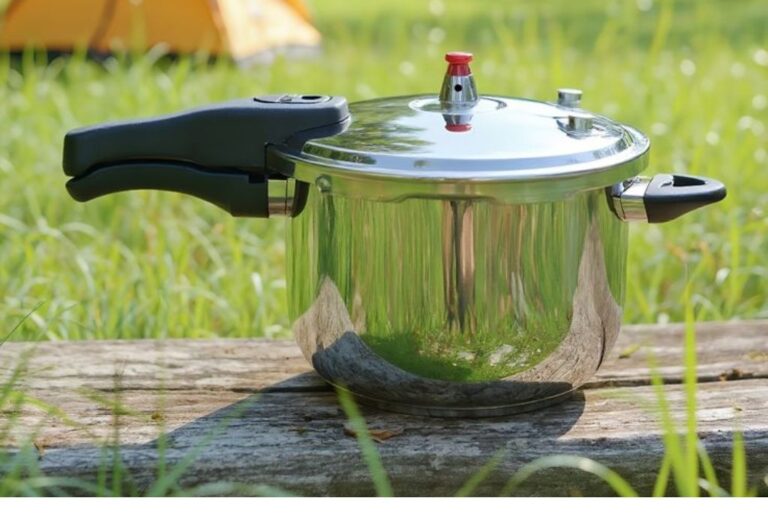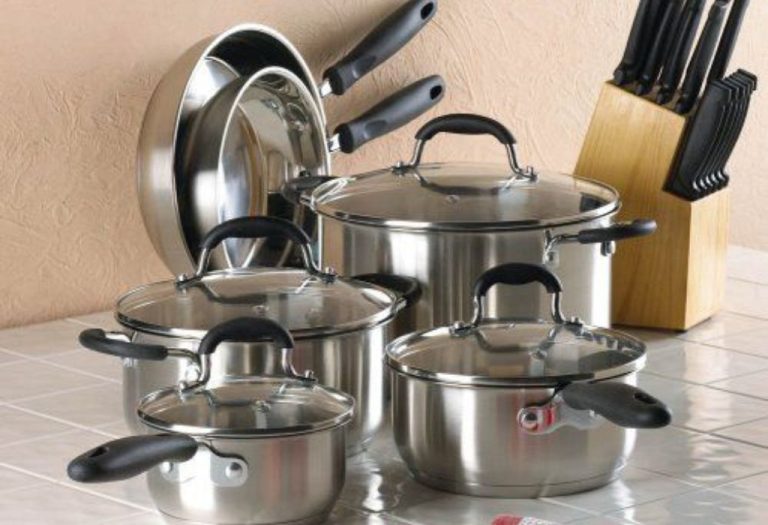The fire crackled as I stirred a pot of stew under the open night sky. Out here, every move mattered because one mistake could mean a burn, a cut, or worse.
I learned that lesson years ago when a friend tipped a pot too quickly, sending boiling water toward his leg. Quick thinking and a well-placed blanket saved him from serious injury.
The truth is, the same dangers I have faced in the wild are waiting in your own home. Safety in the kitchen is not about fear but about awareness.
Sharp knives, sizzling oil, and hot steam can be just as unforgiving as a mountain trail. With the right habits, you can cook with confidence and stay safe.
In this guide, you will learn 10 essential kitchen safety rules drawn from both outdoor survival and everyday cooking. Let’s begin.
Safety in the Kitchen
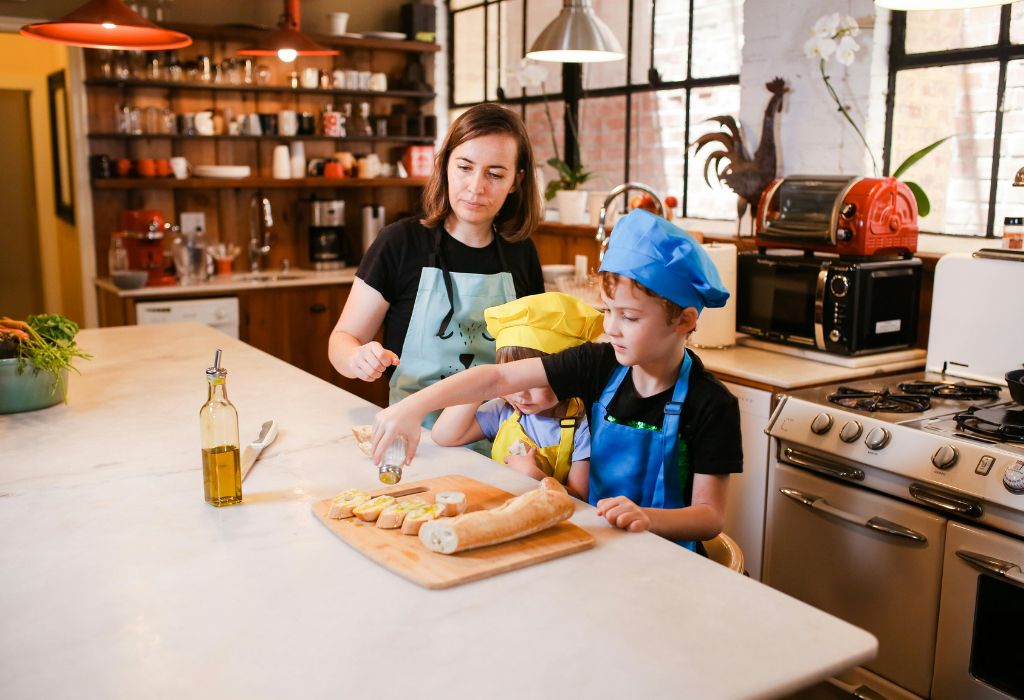
Safety in the kitchen is like safety on a hiking trail. You need awareness, the right gear, and the discipline to follow simple rules that keep you safe.
From boiling water to sharp knives, hazards are everywhere. Learning how to prevent them is the first step toward cooking with confidence.
In this guide, you will learn 10 essential kitchen safety rules. Each one comes with stories, tips, and answers to common questions so you can protect yourself and those you cook for.
1. Treat the Kitchen Like a Terrain and Stay Alert
When you are crossing rocky ground, every step matters. In the kitchen, every move can mean the difference between a perfect meal and a dangerous accident.
I remember cooking over a campfire when a pot of soup started to bubble over. Because I was paying attention, I caught it before it spilled onto the flames. At home, the same habit can prevent burns and fires.
Never leave the stove or oven unattended while in use. If you must leave, turn the heat off until you return.
Why is staying near the stove so important?
Fires and boil-overs can happen in seconds, and being nearby lets you respond immediately.
What should I do if I get distracted while cooking?
Pause cooking, turn off the heat, and resume when you can focus fully.
Can background music or TV cause accidents?
Yes, if it distracts you from smells, sounds, or visual signs of trouble.
Why compare the kitchen to a terrain?
Both require constant awareness and quick reactions to prevent harm.
2. Clean, Separate, Cook, Chill
In the wild, keeping food safe is a matter of survival. The same principle applies to your kitchen through the “Clean, Separate, Cook, Chill” method.
I once saw a camper store cooked rice in the same cooler section as raw fish. By morning, it was unsafe to eat. At home, the same mistake could cause food poisoning.
Wash hands before and after handling food. Use separate cutting boards for raw meat and produce, cook foods to safe temperatures, and refrigerate leftovers quickly.
Why wash hands for 20 seconds?
It removes bacteria and viruses that can transfer to food.
Why keep meats and vegetables separate?
To avoid cross-contamination of harmful bacteria.
What temperature is safe for poultry?
At least 165°F (74°C).
How soon should leftovers be chilled?
Within two hours, or one hour in hot weather.
Can freezing kill bacteria?
No, it only stops growth, so safe handling is still needed.
3. Knife Safety Is Survival 101
A knife is one of the most useful tools in camping and cooking, but it can also be one of the most dangerous if used carelessly.
During a mountain trip, I saw a friend cut vegetables on an unstable board. One slip and he was bleeding badly. In the kitchen, a sharp knife and a stable surface prevent such accidents.
Always cut away from your body and store knives safely when not in use.
Why is a sharp knife safer?
It requires less force, making slips less likely.
How can I tell if my knife is dull?
If it struggles to slice a tomato cleanly, it needs sharpening.
What is the safest way to carry a knife?
Hold it by the spine, point down, blade facing back.
Can dishwashers damage knives?
Yes, they can dull the blade and weaken the handle.
How do I prevent cutting board slips?
Place a damp towel under the board for grip.
4. Burns and Steam Require Respect
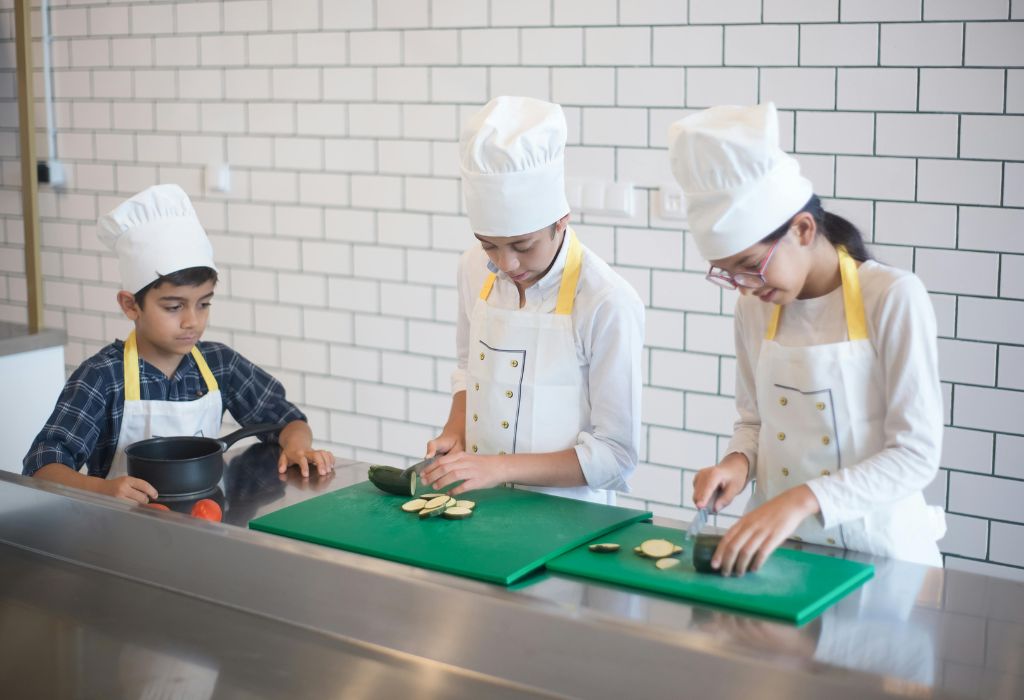
Heat in any form can injure quickly, but steam can be even more dangerous than open flames.
I once saw someone lift a pot lid straight toward their face at a campsite. The burst of steam burned their hand instantly. At home, tilting the lid away keeps you safe.
Always use dry oven mitts and handle hot cookware with care.
Why keep pot handles turned inward?
To prevent bumping and spilling hot food.
What is the safest way to lift a pot lid?
Tilt it away to release steam safely.
Can wet mitts cause burns?
Yes, water transfers heat quickly to your skin.
How to treat a minor burn?
Cool under running water for 10–20 minutes, then cover with a sterile dressing.
Why avoid ice on burns?
Ice can damage skin tissue.
5. Grease Fires Need a Cool Head
Fires fueled by oil spread fast and react dangerously to water.
I remember cooking bacon on a portable stove when grease caught fire. Smothering it with a lid ended it quickly. In the kitchen, the same quick action works.
Turn off the heat, cover the pan, and keep baking soda or a Class K extinguisher nearby.
Why avoid water on grease fires?
It causes the oil to splatter and spread flames.
Can salt put out a grease fire?
Yes, but baking soda works better.
What extinguisher is best for kitchen fires?
Class K for grease, Class ABC for general fires.
Should I move a burning pan?
No, it can spill and spread flames.
What is a fire blanket for?
Smothering flames without spreading hot oil.
6. Floors Clear Means Injury Free
A wet or cluttered floor can cause serious accidents in seconds.
On a camping trip, a spilled drink in our cooking area led to a painful fall. In your kitchen, spills should be cleaned right away.
Keep pathways clear and use non-slip mats where needed.
What is the first step after a spill?
Wipe and dry the area immediately.
Are rugs safe in the kitchen?
Only if they are non-slip.
Should I wear shoes in the kitchen?
Yes, to protect feet from sharp or hot objects.
What kind of shoes are best?
Closed-toe, slip-resistant shoes.
Can clutter increase accidents?
A: Yes, cords, bags, and utensils can cause trips.
7. Dress for Safety
Your clothing should help you cook, not put you at risk.
While cooking outdoors, I once saw a loose sleeve catch on a pot handle. At home, fitted sleeves and safe shoes prevent similar accidents.
Avoid synthetic fabrics near heat and wear an apron for extra protection.
Why avoid loose sleeves?
They can catch fire or snag on handles.
Which fabrics are safer for cooking?
Cotton and natural fibers resist heat better.
Why wear an apron?
It shields you from spills and splashes.
How can jewelry be a hazard?
It can snag or swing into flames.
Why choose slip-resistant shoes?
They help prevent falls on wet or greasy floors.
8. Keep Appliances and Hands Dry
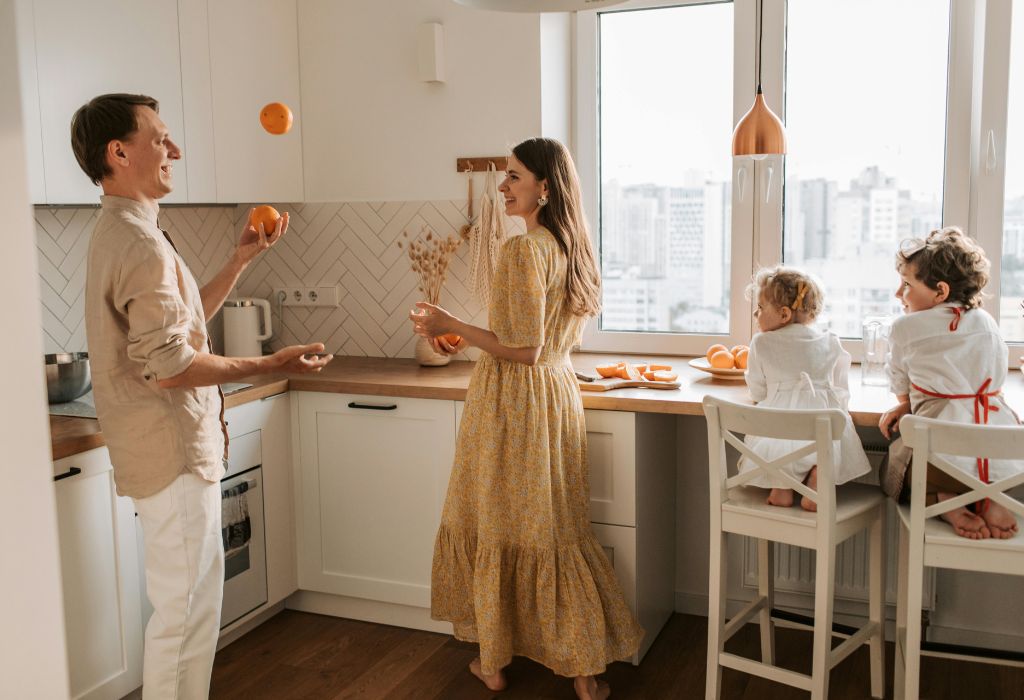
Water and electricity should never mix.
I once saw someone plug in a toaster with wet hands at camp. The risk was high, but a quick reminder kept them safe.
Unplug appliances before cleaning and dry hands before touching plugs.
What is a GFCI outlet?
An outlet that shuts off power if a fault is detected.
Why unplug before cleaning?
To avoid electric shocks.
Can water damage appliances?
Yes, it can short circuits and cause corrosion.
Why hold the plug instead of the cord?
Pulling the cord can damage wiring.
Is it safe to store appliances near the sink?
Avoid it to reduce water exposure.
9. Childproof Your Kitchen
Children explore with curiosity, and kitchens hold many hidden dangers.
During one camp meal, a child reached for a pot handle, almost tipping it over. Turning handles inward could have avoided the risk.
Lock away knives, cleaning supplies, and heavy cookware when not in use.
Why turn pot handles inward?
To keep children from grabbing them.
Where should knives be stored?
In locked drawers or out of reach.
Should kids help in the kitchen?
Yes, with safe, supervised tasks.
What household item is most dangerous for children?
Cleaning chemicals under the sink.
Are child safety locks effective?
Yes, when installed and used properly.
10. Be Prepared with Smoke Alarms and a Fire Plan
Preparedness is key to avoiding disasters.
At a cabin, our smoke alarm once saved us from a smoldering pan. At home, the same tool can be life-saving.
Test alarms monthly, replace batteries yearly, and keep an extinguisher nearby.
How often should smoke alarms be replaced?
Every 10 years.
Where should I place a fire extinguisher?
Near the kitchen exit, not next to the stove.
What does PASS stand for in fire safety?
Pull, Aim, Squeeze, Sweep.
Should I call for help after putting out a fire?
Yes, to ensure it is completely out.
Can smoke alarms detect all fires?
No, but they give early warning for most home fires.
From Survival to Safe Cooking
The lessons from outdoor survival work just as well in the kitchen.
By staying alert, preparing ahead, and using safe habits, you can turn cooking into a risk-free and enjoyable experience.
Start with these 10 rules and make them part of your daily routine. A safe kitchen is the best recipe for a happy meal.
I’m Emma J. Caldwell, the founder, lead writer, and home-cooking enthusiast behind KitchenGuideCo.com. With a background in culinary arts and over a decade of cooking experience in both professional and personal kitchens, I created this platform to demystify recipes, offer smart kitchen gadget reviews, and guide readers through meal prep with confidence and clarity.
